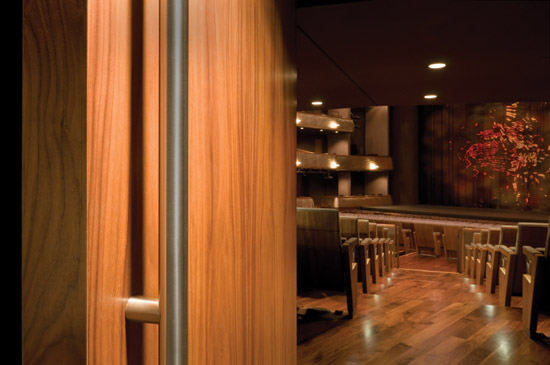What Architects Need to Know About Specifying Wood Doors
Learning Objectives:
- Discuss the basic components of an architectural wood door and explain the function of each.
- Compare the features, options, and benefits of wood door construction materials.
- Describe wood door assembly and construction methods from a durability standpoint.
- Name the industry performance standards that relate to wood door design and aesthetics.
Credits:
Doors are a critical part of every building, and there are a plethora of options to satisfy a variety of needs. Today's marketplace is flooded with so many choices in types and styles of wood doors that selecting the right door for a given situation can often be a time-consuming and perplexing process. Yet properly specified doors go a long way to achieving the aesthetic, functional, safety, and environmental requisites that enhance the look and durability of a commercial space. Architects and design professionals who are researching, comparing, selecting, and specifying wood doors should be equipped with an understanding of the basic anatomy of a door, and the function of all constituent parts as well as a knowledge of industry standards that must be met. This article will serve as a primer on wood doors, their components, and construction methods and how to achieve optimum results from the perspective of performance, aesthetic, and environmental concerns.
Anatomy of a Door
Architectural wood doors are assembled products comprised of multiple components, each with its own purpose. All doors consist of:
- A core, the main component, and innermost layer.
- Stiles, the vertical lock, and hinge edges.
- Rails, the top, and bottom edges.
- Face materials, the outermost layer.
Depending on the door construction process, two additional components may be included. Crossbands are materials placed between the core assembly and face material, and backers, which are materials applied to the crossbands opposite the face.
 |
Properly specified doors help achieve the aesthetic, functional, safety, and environmental requisites that enhance the look and durability of a commercial space. Photo courtesy of VT Industries, Inc. |
In the architectural wood door construction industry the term “ply” is used to identify wood door components. The number of ply in door construction is distinguished by the number of layers of material in the door, which may be 3, 5, 7 or 11. The number of ply may also determine the technology and technique used to manufacture the door. The core of the door is counted as one ply, with each extra component counted as additional ply. Symmetry, or equal ply surrounding the core, is important to avoid any warping during the manufacturing process.
Architects should note, however, that three-ply door construction, which consists of a core assembly and face materials attached to either side of the core, is not considered as stable or as durable as doors with more ply. Three-ply construction is primarily used for high-pressure decorative laminate doors in architectural applications such as office spaces or other low-use areas.
Three-ply doors are often not available with wood veneer face materials since the core may show or “telegraph” through the face laminate and distract from the door's aesthetic appeal.









